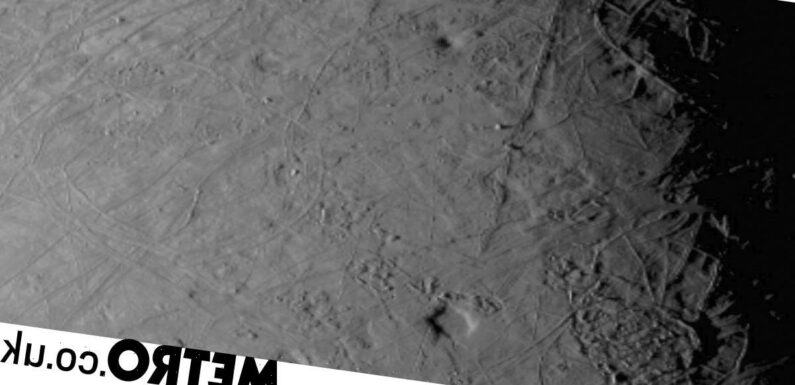
Nasa’s Juno spacecraft has made the closest approach to Jupiter’s icy moon Europa in more than 20 years.
Juno zipped within 222 miles of Europa, thought to have an ocean flowing beneath its thick frozen crust, raising the possibility of underwater life.
Scientists hope to get lucky and observe possible water plumes shooting from the surface of Europa, once the data is processed.
Europa is close in size to Earth’s own moon.
‘We have to be at the right place at just the right time, but if we are so fortunate, it’s a home run for sure,’ Juno’s chief scientist, Scott Bolton of Southwest Research Institute in San Antonio, said in a statement.
As exciting as Juno’s data will be, the spacecraft had only a two-hour window to collect it, racing past the moon with a relative velocity of about 14.7 miles per second (23.6 kilometers per second).
More pictures should be available by Friday, Nasa said.
‘It’s very early in the process, but by all indications Juno’s flyby of Europa was a great success,’ said Scott Bolton, Juno principal investigator from Southwest Research Institute in San Antonio. ‘This first picture is just a glimpse of the remarkable new science to come from Juno’s entire suite of instruments and sensors that acquired data as we skimmed over the moon’s icy crust.’
The latest observations will help Nasa plan for its Europa Clipper mission, due to launch in 2024.
The European Space Agency also plans close encounters with its Jupiter Icy Moons Explorer, or Juice, lifting off next year.
Nasa’s former Galileo spacecraft still holds the Europa flyby record, passing within 218 miles (351 kilometres) in 2000.
Source: Read Full Article

